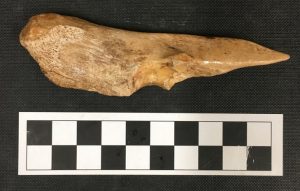In the Spotlight: Oct. 12, 2017
Kudos to these faculty and staff
Do you have a spotlight item to share with the NAU community?
E-mail your announcements to Inside@nau.edu, or use our online submission form.
- Northern Arizona University recently won the Award of Merit at Arizona Forward’s 37th Environmental Excellence Awards. NAU presented education awards and received the Award of Merit in the category of Innovation.
- Anthropology lecturer Britton Shepardson just launched his book in Spanish, “MOAI: una nueva mirada a los rostros antiguous.” The book was published by Rapa Nui Press. Shepardson completed a two-week outreach program loaded with 3-D photogrammetry, lithic analysis, local expert lectures, classroom sessions and hiking excursions.
- Northern Arizona University’s logistics & supply chain management degree is included as one of the Best Online Bachelor’s Degrees for 2017. The ranking, published by College Choice, looked at academic reputation, retention rates, early career salaries of graduates and cost per credit hour.
- Sharon Moses, assistant professor of anthropology, continued her Hume Plantation research this summer in South Carolina. Conditionally accepted for publication, her article is about 21 ritual deposits discovered beneath slave cabin floors, corners, and backyard garden areas—mainly for protection, curative purposes or to appeal to water spirits and ancestors. This is one of the largest number of enslaved African ritual or spell deposits found thus far on a plantation in the South Carolina Lowcountry to date.
- Chrissina Burke, anthropology lecturer, received a $30,000 National Parks Service grant to complete the Wupatki and Walnut Canyon faunal analysis at the national monument. Burke and three students are analyzing the animal bones found in archaeological contexts from the Wupatki and Walnut Canyon National Monuments. They are identifying which animals are present, the specific bones and if there are any marks to the bones indicative of cultural behaviors. These bones will be analyzed in the Faunal Analysis Laboratory at NAU’s Bilby Research Center.



